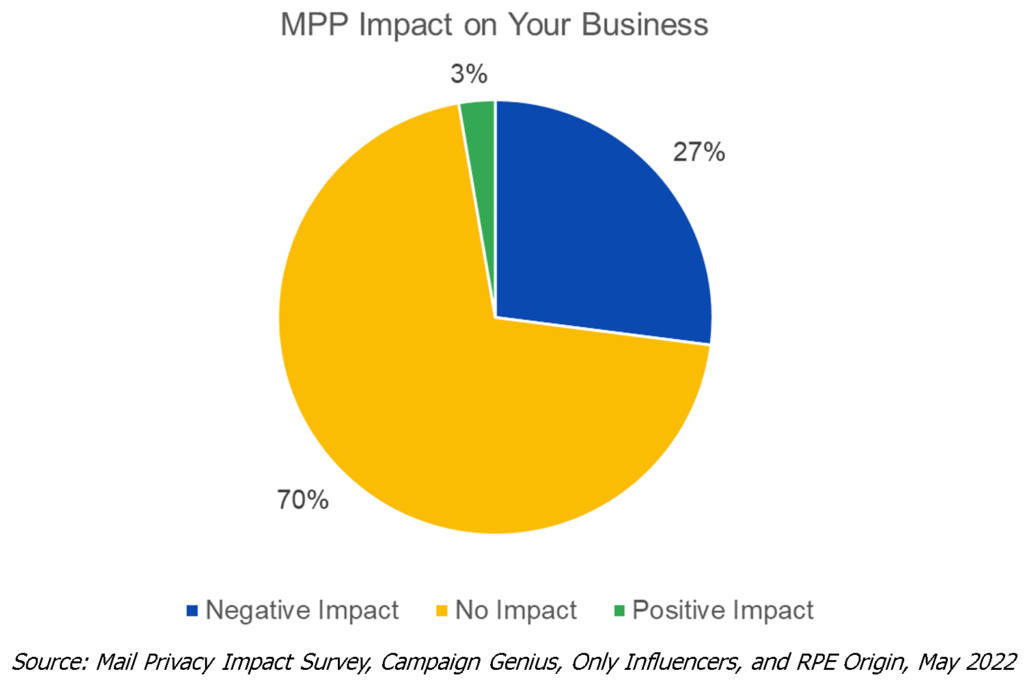As 2022 came to a close and we welcomed 2023, it is essential to look back on our email marketing metrics and see what has changed and where we go from here.
To fully grasp the most significant change in metrics we need to go to September 21, 2021, when open rates changed forever due to Apple’s MPP. Open rates always presented a large margin of error, even more so in 2022. It wasn’t until the first quarter of 2022 that we started to see the impact of open rates as MPP rolled out to more and more users.
Was MPP a bad thing for the email marketing industry? If you were still relying on open rate as your primary metric for success, you probably thought it was. The good news is that as of May 2022 70% of those surveyed saw no impact on their business as a result of MPP (Source: Community Update on Apple’s Mail Privacy Protection (MPP))

Many of us in the industry just moved on to other metrics in 2022, and some of us probably had moved on years before believing that open rates were unreliable with MPP just being the final straw. One thing to note is that with the open rates being far less valuable, so are metrics that rely on opens, such as click-to-open. We also moved from open reach rate and started focusing more on click reach rate. On the positive side, with open rates or lack thereof today, we can better say who is genuinely inactive with our emails. If they aren’t registering even a false open, think twice about sending to them and try to reach them on another channel. Better yet, use a tool that can help you identify if they are unengaged with your emails or the email channel as a whole.
On to the Clicks
As a result of MPP, clicks became more important metric, but it always was because this metric is absolute, and while there will be false clicks, it is almost never was as high as the false opens. Clicks proved very valuable in 2022 and will continue to be that way. I wrote about a click strategy last November and believe this is one of the best ways to engage your clickers and focus your metrics.
Revenue Per Email
It goes without saying that we want emails to drive revenue, and they do. RPE (Revenue Per Email) is one of the best ways to show how your email marketing efforts are performing and where you need to make changes. In previous years I tried hard to use ROI (Return on Investment), but in 2022 (or even a little earlier), I became convinced that RPE was not only a more manageable metric but showed just as much value in determining email marketing success. If you want to understand this in more detail, I’m referring you to an article that fellow OI Metrics member Jeanne Jennings wrote outlining the use of RPE.
So how do we wrap up the year on metrics and look forward? Sometime this month there will be a scramble to see how email marketing performed as a channel in 2022 vs. years past. While this will be a hot topic for email marketers like myself, my clients and other businesses will be looking at wrapping up the year in metrics by looking at their own metrics year over year. One thing you might want to consider making the process of reporting and analytics on your year in review a little less daunting is to segment your results. Luke Glasner writes about this in detail here.
My favorite 2022 metric
My favorite metric for 2022 was clicks, not because it is the most important metric but because it is probably the most underutilized metric. It is often what I refer to as a missed opportunity.
So that’s a wrap on 2022 metrics. Wishing you a wonderful year in email marketing in 2023.

Photo by Isabela Kronemberger on Unsplash